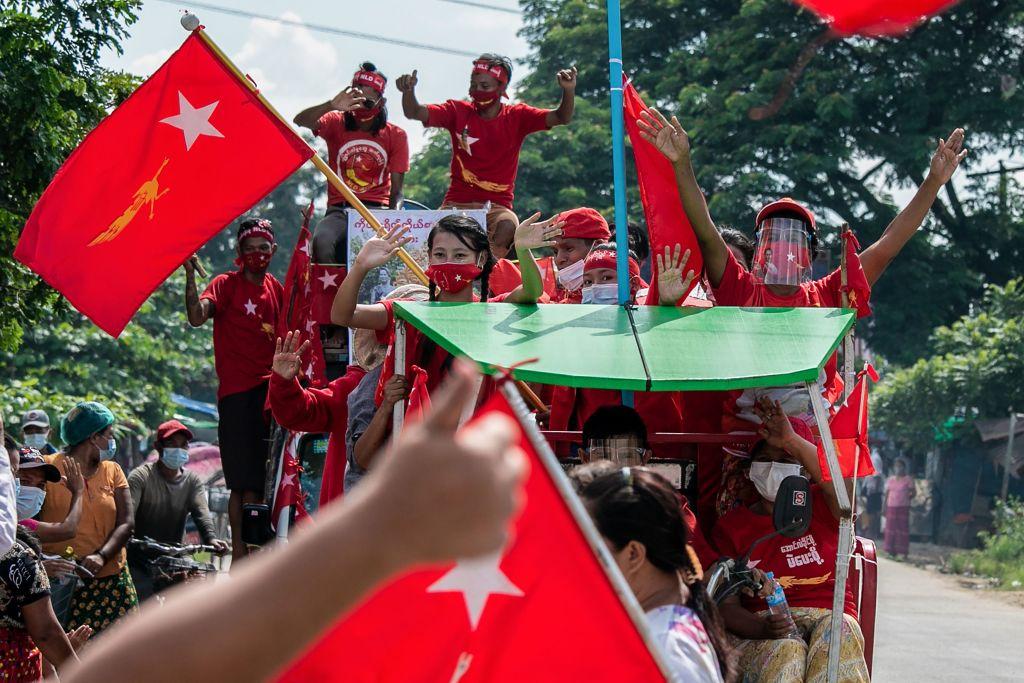
Myanmar’s citizens will brave Covid-19 concerns to go to the polls on 8 November. In a survey conducted last month, a third of respondents identified Covid-19 or health issues as a concern or barrier to voting. The survey also showed high trust in State Counsellor Aung San Suu Kyi; more than 65% of respondents reported positive attitudes towards the ruling National League for Democracy (NLD), which she leads.
Even without those findings, the general outlook for Myanmar’s election is that the NLD will be returned to office, albeit with a smaller majority. The party is seeking a second mandate with an undertaking to continue tackling the promises made in 2015 when it ran—and won—on a ticket for change against the incumbent Union Solidarity and Development Party.
Foreign policy was an area of continuity in the NLD’s agenda for change. The brief statement on foreign policy in the party’s 2015 manifesto started off with a commitment to uphold ‘an active and independent foreign policy’, which has been Myanmar’s position since 1974, when it amended its neutralist non-aligned policy to indicate that neutrality did not mean sitting on the fence.
As foreign minister, Aung San Suu Kyi confirmed a neutralist foreign policy in a briefing to the diplomatic community in Myanmar in April 2016. It was short on details, but the broad approach seemed to indicate a potentially stronger focus on multilateralism, with mentions of neutralism, universal friendship and human rights, and more people-to-people contacts. ASEAN and East Asian ties seemed to feature as large as they had under the Union Solidarity and Development Party; the NLD’s 2015 manifesto included an intent ‘to work together for the benefit of the region on issues relating to regional organisations and programmes’.
But in 2016–17 the international spotlight was focused on Myanmar over the military’s atrocities against the Rohingya communities in Rakhine State. Though keeping the ASEAN link, Myanmar’s foreign policy shifted to a preference for bilateralism and an ‘Asian pivot’ in seeking investment and trade continuity from Asian partners, notably China, Japan and South Korea. These three countries are among Myanmar’s top 10 trade and investment partners, together with the United States (in trade), India, and several ASEAN countries (in both trade and investment).
The section on foreign policy in the NLD’s 2020 manifesto continues the commitments to an active and independent foreign policy and to relations with international bodies. Unlike in 2015, however, there’s no explicit mention of identifying ‘joint economic enterprises of mutual benefit’ for cooperation with other countries, or working together on regional issues.
Yet, any government taking on the challenge of leading Myanmar through its difficult transition should consider the economic and multilateral dimensions of foreign policy. Economic diplomacy will feature more in Myanmar’s 21st-century foreign policy than in the past, as the country’s trade and investment partners will link their financial interests to decisions related to expanding (or entrenching) their strategic space.
In continuing to balance its domestic exigencies with external pressures, Myanmar’s post-2020 foreign policy seems set to be shaped by two main factors: balancing relations with China amid complex geopolitical concerns and continuing with economic reforms as the basis for domestic and external legitimacy.
It’s unlikely that the NLD government will favour a tougher approach towards China, not just because of Chinese economic and infrastructure interests in the country, but also the political nature of China’s ‘mediator’ role in Myanmar’s peace process with ethnic armed groups and on the Rohingya crisis.
Still, a more nuanced approach to China might also help to better define Myanmar’s interactions with other Asian partners. The government seems interested in continuing along this ‘diversification’ path. Economic and social recovery from the Covid-19 pandemic offers a ready context for this. Myanmar’s recent hosting of a visit by high-level foreign affairs and defence officials from India, engagement of the business and investment community in Hong Kong and the United States, broadening of economic cooperation with South Korea and Singapore, and signing of an agreement with EuroCham serve as some indicators of this intended direction.
Myanmar may have opportunities to shape its relationship with China so that it advances its own interests in an emerging—and widening—field of play beyond traditional security considerations. Covid-19 has complicated non-traditional security concerns, and a broad range of geopolitical issues linked to economics, energy and technology are imposing binary choices on Southeast Asian nations, including Myanmar.
The return of the NLD with a second mandate could also bring more emphasis on the environmental and climate provisions of any trade or investment deal. This is an area to watch, if the addition of ‘sustainability’ to the party’s commitment for economic prosperity in the 2020 manifesto is anything to go by.
Myanmar also should consider how a new US administration might pursue (or revisit) America’s strategy in Asia. Myanmar’s constrained international bandwidth adds a third factor. How can decision-makers close the gap between the discussion on national security and interests, and perceptions of the country’s conflict-soaked history?
Myanmar already has a convenient and constructive platform to address these foreign policy concerns. As an ASEAN member, Myanmar’s political and economic choices affect—and are affected by—ASEAN’s regional choices and commitments. Myanmar’s post-2020 foreign policy would do well to have a stronger ASEAN underpinning.